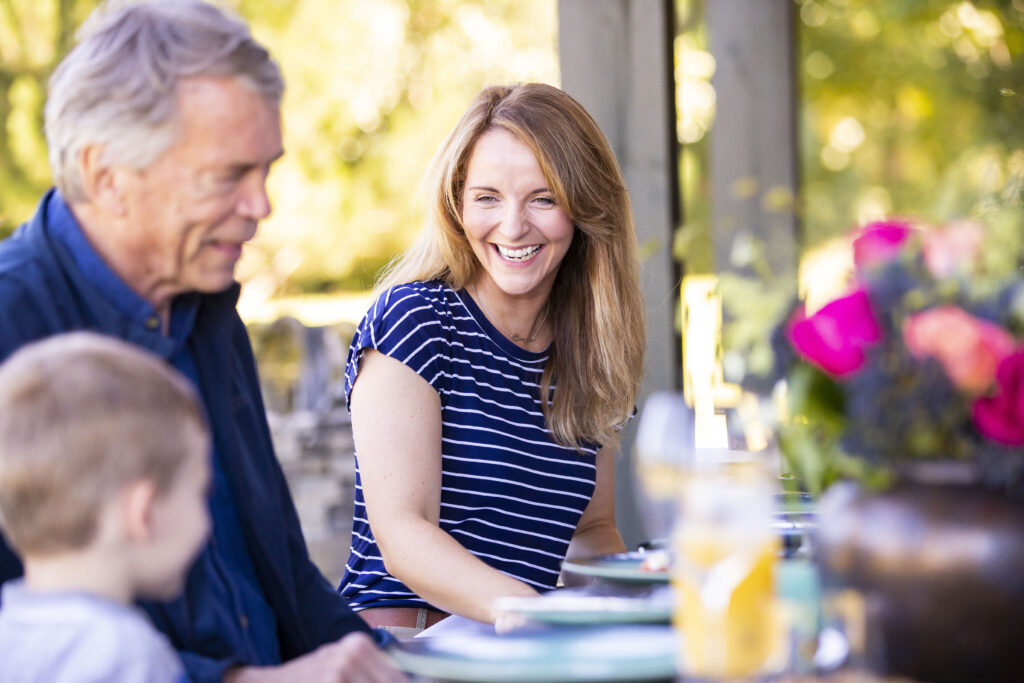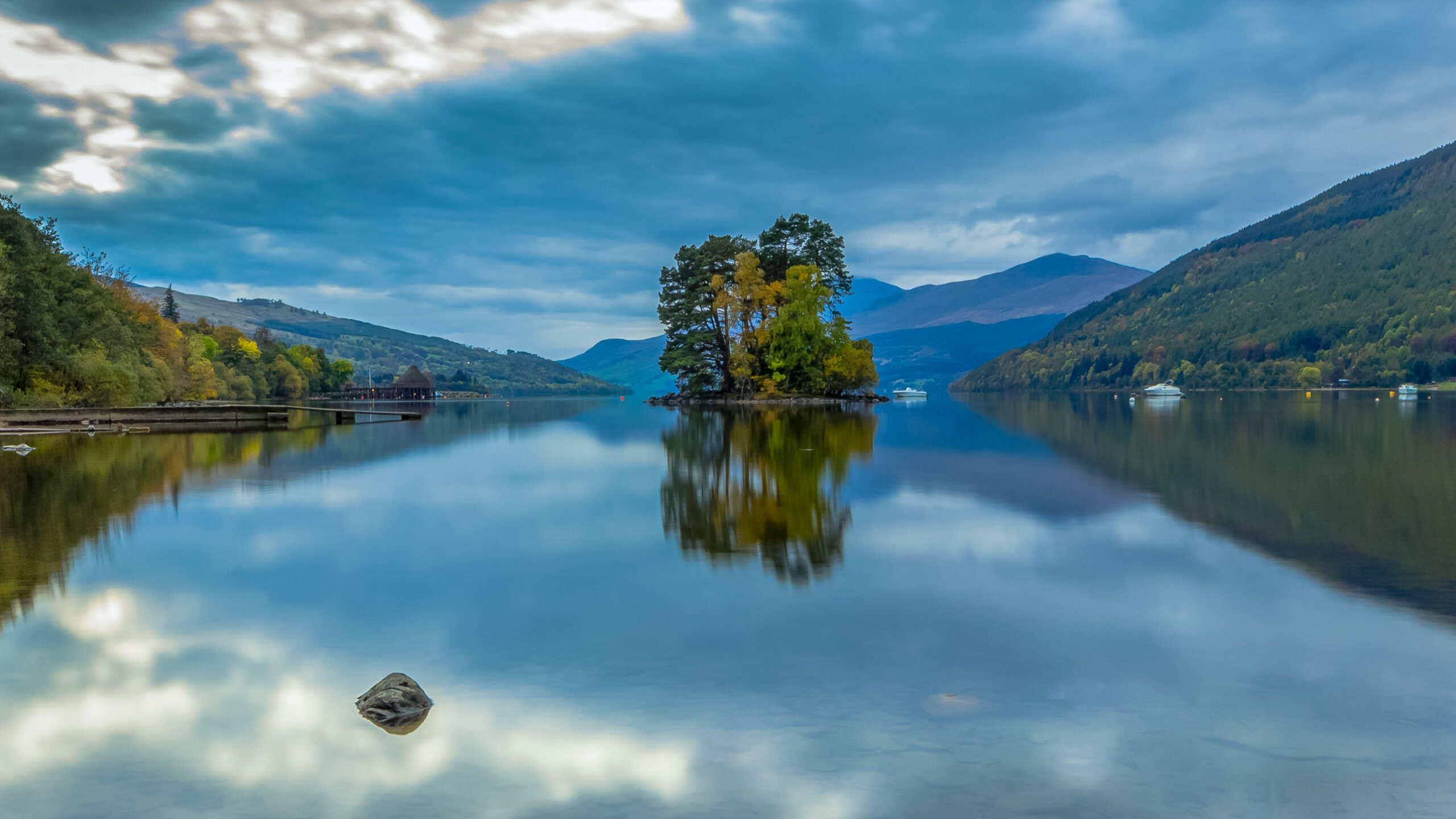
preserving history and the environment
Throughout each step in the process, we take utmost care to protect the native flora and fauna and make investments to improve the natural resources and environment. Every aspect of this project will meet or exceed the requirements and standards of Perth and Kinross Council, NatureScot, and Historic Environment Scotland.
the castle
We enlisted the support of experts in restoration, preservation architecture, and the very best craftsmen to restore Taymouth Castle to its original splendour. The investment of time and money is extraordinary, but well worth it, allowing the Castle to be a source of pride for the region for the next 200 years.
the facade
We engaged with the British Geological Survey to identify the precise type of stone used in the original construction of the Castle, green chlorite schist. We then located the closest match available today 90 miles away at a quarry in Achnaba, on the west coast of Scotland. Although similar stone is available much closer to the Castle, we are committed to ensuring the materials we use today match as closely as possible to those used here nearly 200 years ago.
art and finishes
We initiated a painstaking, five-year project to restore stained glass and repair the gold leaf ceiling. We enlisted the help of expert historic conservationists to ensure that every detail possible was returned to its original beauty.
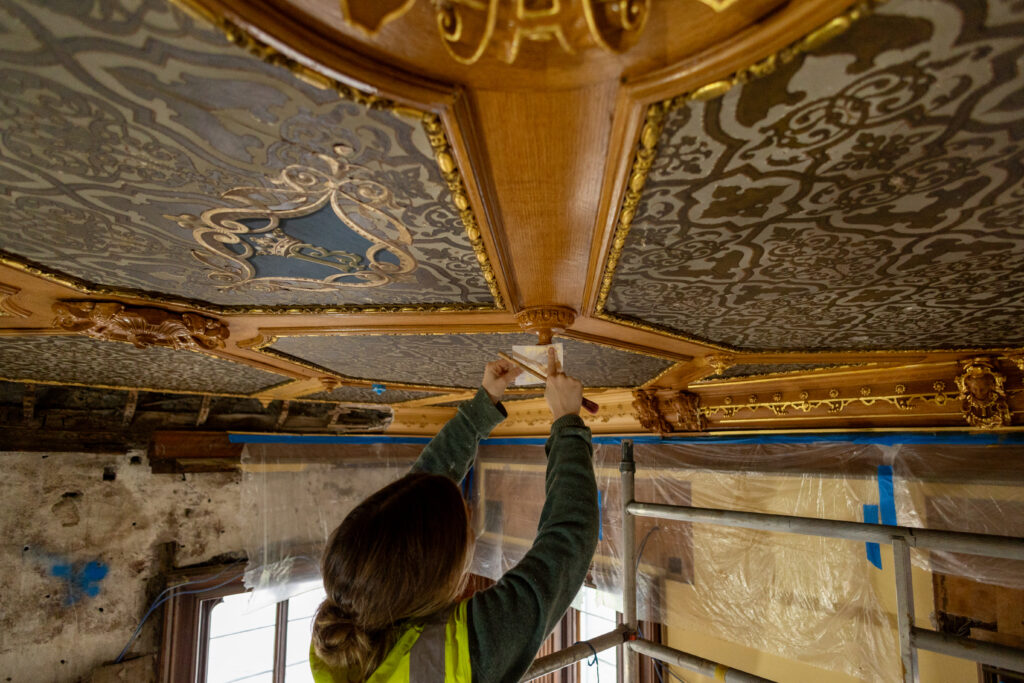
infrastructure
After we determined that the existing sewage treatment system was discharging very poor-quality effluent into the River Tay, we initiated a full replacement with modern infrastructure. This, and other steps we have taken, will result in a significantly healthier river when we complete the project than when we began.
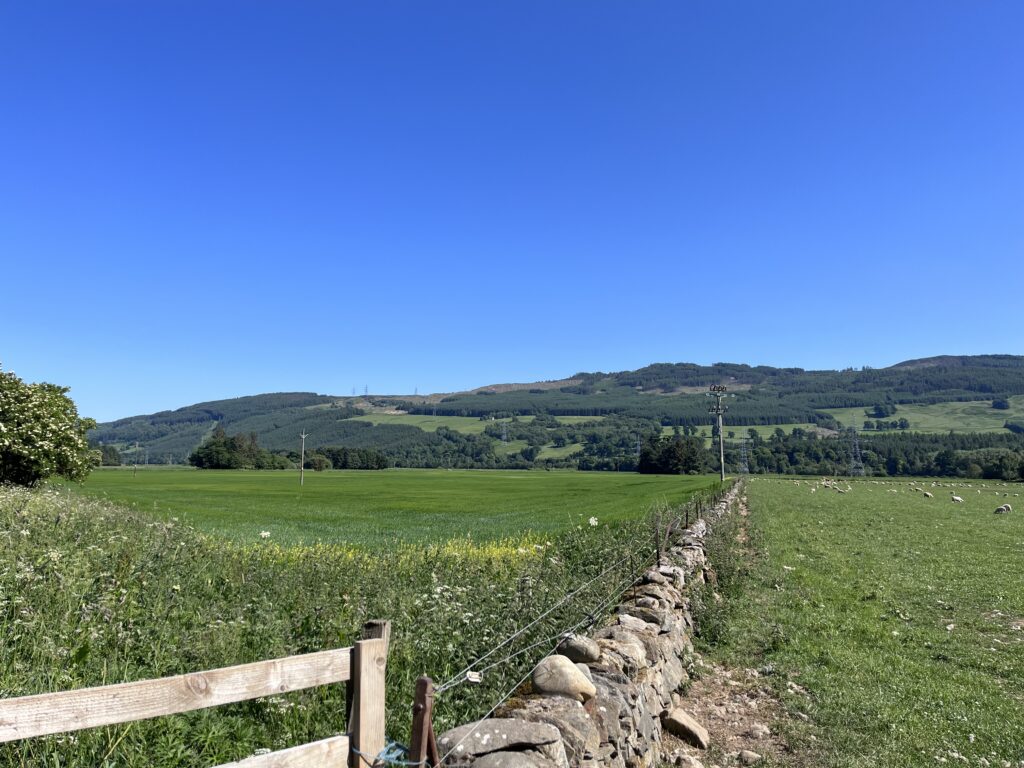
Public Access
There are approximately 7.3km of core paths on the Taymouth Castle Estate running from Kenmore to Croft Moraig. Core path diversions have been approved by the Perth and Kinross Council for the safety of visitors and to facilitate the construction work. Please find the current construction-related diversions here or visit our News page for further updates.
The Taymouth Estate will honour the spirit and letter of the law, including those pertaining to public access and core paths. When the project is complete, the core path network will be restored as closely as possible to its original state.
Please find the existing core path plan here.
The landscape
The Estate is home to many important species of trees and several of historical significance. Sadly, due to many years of neglect, some of these trees have died, become diseased or unsafe.
Invasive plants, such as rhododendron ponticum and Impatiens glandulifera have overtaken some areas, choking out important native species.
We have engaged an expert arboriculturist to advise on forestry management to identify and protect rare, old growth and historic trees, remove non-native invasive plants, and restore and expand wildlife habitat.
For example, we have identified trees planted by Queen Victoria and Prince Albert, and a 400-year-old Sweet Chestnut, among other important specimens, and developed a management plan to maintain and safeguard these trees. We are also working with SISI to help eradicate Japanese Knotweed on the grounds.
We have also undertaken a wildflower survey to identify populations of Bluebells, Snow Drops and Daffodils on site so we can preserve important areas of native wildflowers to the greatest extent possible.
These are just a few examples from an ambitious, multi-year effort to restore and preserve the landscape.
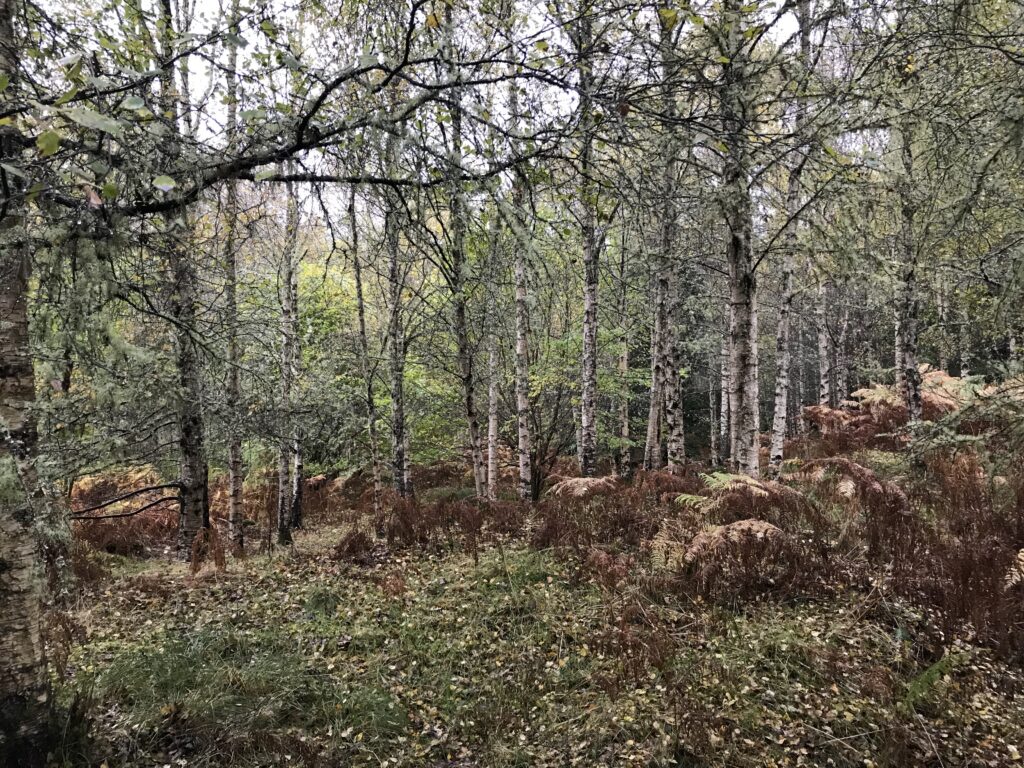
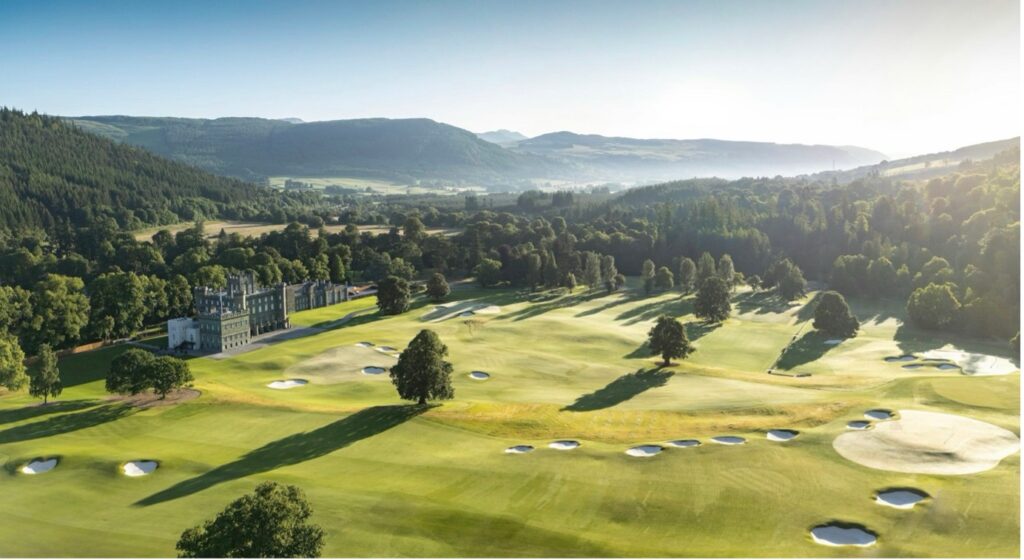
the golf course
The Taymouth Castle golf course was first opened in 1925. Current renovations to the course are utilising the latest methods of reducing water consumption, employing environmentally responsible products to maintain the course, and ensuring nothing is diverted into the natural environment.
The project has been planned to use as much of the existing material as possible to support our environmental approach to this development, reducing the need to import material to the site and minimising traffic on the A827. We anticipate the renovations will be complete in 2025.
Wildlife
To protect the welfare of red and roe deer on the Estate, we have engaged a respected veterinarian and expert in deer health to perform a census of the population and help us implement deer welfare plans.
In the short term, we are installing specially designed ports that allow roe deer to pass safely through construction fencing and we are monitoring the population closely.
There will be no trophy hunting on the Estate. The only deer management that will ever be considered will be that which is conducted for the welfare of the deer, to keep a healthy deer population in balance with a diverse and thriving habitat.
The Estate is also home to many other mammals and birds, including beavers, foxes, otters, hawks, and red squirrels. Wherever we see an opportunity, we act to safeguard them as well.
Our wildlife, woodland and landscape management programs are closely coordinated to ensure a healthy, safe, and sustainable environment for flora and fauna alike.
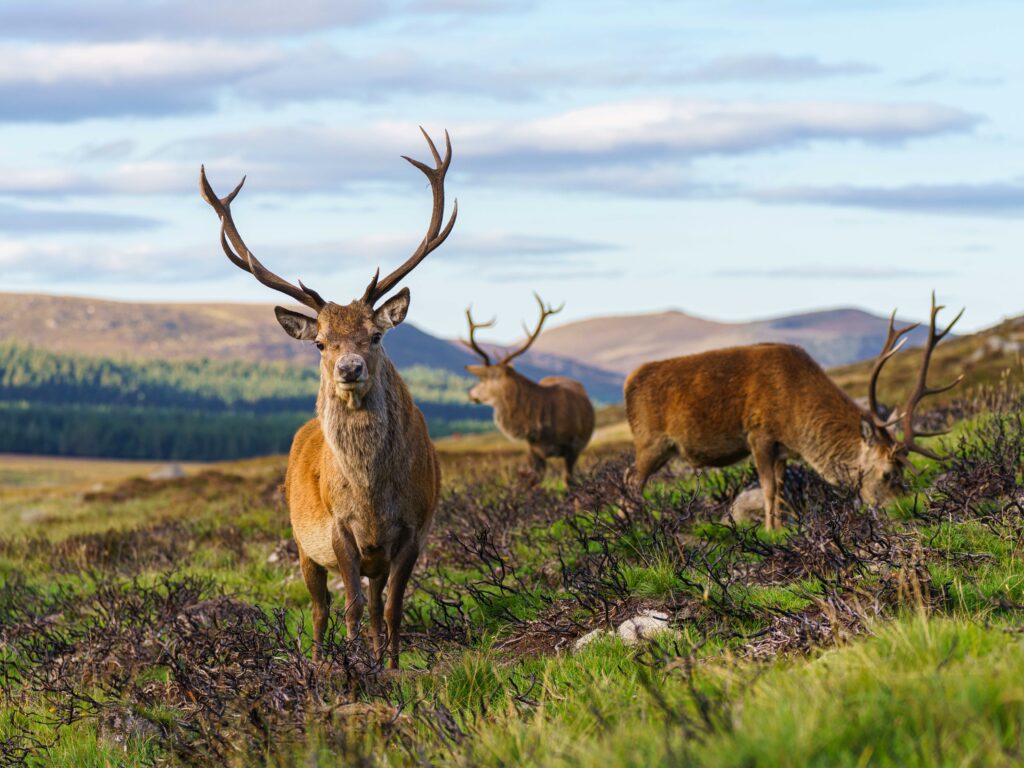
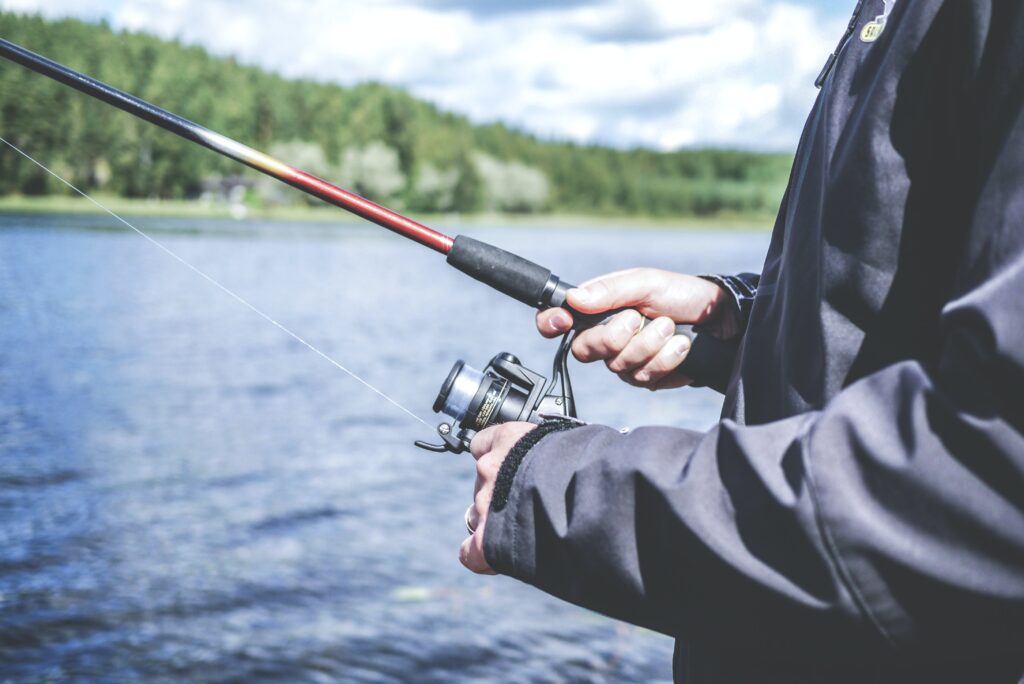
fishing
Fly fishing for trout fishing is permitted from the north bank of the river between Kenmore Bridge and Chinese Bridge. All catches should be reported online and include the location, species, length and weight of fish. This is requested to permit us to secure accurate information relating to the health and number of fish in Estate waters.
To preserve fish stocks, we request that all fish be returned to the river unharmed.
Daily trout fishing permit applications can be made online at the links below:
Residents can apply for a £1 daily trout fishing permit here.
Local residents in the Kenmore area can apply to purchase a seasonal pass here.
Non-resident permits will be £12.50 and can be acquired here.
We ask that those who seek to fish for salmon do so outside of the Estate. We apologise if this creates an inconvenience.
home construction
All new homes on the property will be designed to the strictest environmental standards. Residences will be highly insulated and utilise renewable forms of energy, the latest mechanical ventilation and heat recovery systems and, to the greatest extent possible, natural materials in construction.
The Scottish Building Regulations set a minimum standard for energy use and, to the greatest extent possible, we will exceed those standards.
Discovery Land Company has used innovative low-carbon designs and construction methods in every one of its communities to date. However, we intend to achieve even higher levels of sustainability at Taymouth Estate and expect it will be a model for earth-friendly home construction worldwide.
